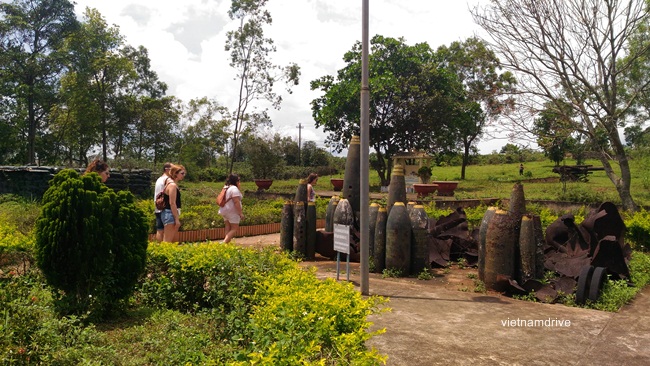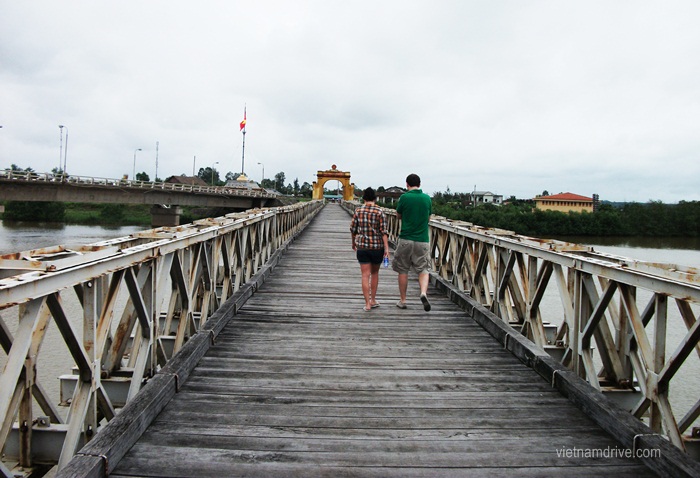Ta Con Air Base in Quang Tri since Jan 1968
From January 20 to February 7, 1968, after destroying some of the strongholds in the west and opening of highway 9, armoured army for the first time in coordination with infantry overrun Lang Vay and soon after that tightened the siege to Ta Con combat base.

Under the rain of bombs and shells, the liberation army bravely held attacking the target and gradually got closer to the base.
The American could not loosen the siege because of the liberation army as close as the barbed wires surrounding the base, their guns and rockets already could shoot directly at American troops in the base, tanks and planes landed on Ta Con airstrip.
American in the base had to hide themselves in underground trenches as the French did in Dien Bien Phu in 1954. Ta Con became “the earth hell” of the American troops.
Transport aircraft C130 hovered in the sky for supply and lift of the wounded 140 times but only 40 times were able safely landed on the airstrip under the support of air and artillery strikes.
To minimize the loss, the American decided to use parachute drops for supplies, but the result was little because most of the supplies landed in the liberation army’s area.
Check tours to visit DMZ:
Hue to DMZ Vietnam Tour
Ta Con Air Base in Quang Tri since April 1968
In April of 1968, when Tet general offensive was settled down, American commanding post mobilized air cavalry division 1 and 3 parachute battalion, 1 South Vietnamese army battalion to launch two operations namely called “Flying Horse” and “Lam Son 270” to lift Khe Sanh siege.

To support the American and South Vietnamese army’s counter-attack, bombs were dropped in a distance of only 400m from Ta Con based, B52 fighters blockaded in and outside distance from 2 to 3km.
The severe battles took place on the heights of 471, 400, 542, 479, Che Rien, and Lang Khoai.
The enemy suffered from the heavy loss but thanked powerful fire support, they occupied some advantageous positions. The siege of Khe Sanh was loosened and the replacement of troops in Khe Sanh was able to make.

At that time, their Khe Sanh defensive manner also focused on Ta Con. They increased two marine regiments, 2 air cavalry battalions, and occupied important heights of 689, 552, 471, Cu Boc, Lang Khoai. However, they still could not control the west side of Ta Con.
In that situation, the commanding board of the campaign (the North Vietnam) instructed to continue actively attacking and maintaining the siege to Khe Sanh again. This is to pull back the enemy here for encounter and help Tri-Thien to have the second round of offensive and uprising.
Division 308 and Regiment 246 were mobilized for highway 9 – Khe Sanh front. With the reinforcement, the liberation army (the North Vietnam) reoccupied Lang Cat, Che Rien, Cu Boc and isolated Ta Con. The American commanding post had to move division 3 of marines to Khe Sanh.

On the first of June, division 3 of US marines launched an operation namely called Scotland in Tu Ri, Ta Quan, Huc, Coc Pa Tang to pull back the liberation army from Khe Sanh for the counterattack. But in the beginning of the operation, one battalion of the enemy was suffered from big loss.
At the same time, liberation army attacked and destroyed sets of strongholds in the west of Ta Con and highway 9, totally cut communication by land and controlled air route. Ta Con was totally isolated and put under threat of elimination.
In response to the situation, the enemy had to end Scotland operation, withdrew forces back to keep highway 9, south of Ta Con. They moved 2 Marine battalions downward to keep Dong Ha and Cua Viet.
The liberation army enhanced attacking along the highway 9, especially in Ta Con. Judging the situation that could not be stood, on 26 of June, Westmoreland decided to abandon Khe Sanh, but it was heavily attacked by the liberation army, only after 11 days since American troops who survived to leave Ta Con.
On July 9, 1968, Khe Sanh was liberated.
This information is extracted from Quang Tri Management Board of relics and high-interest sights.
Read more: The famous war relic near the DMZ: Vinh Moc Tunnels
